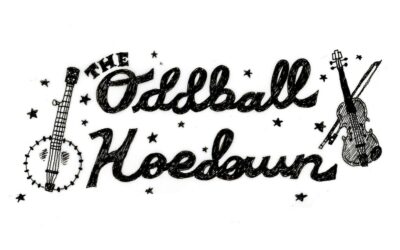When Bison Books first republished Black Elk Speaks in the fall of 1961, on the cusp of the counterculture movement, “the timing of the new edition could not have been better,” writes Timothy G. Anderson, author of Lonesome Dreamer: The Life of John G. Neihardt. College students across the country pounced on it in the same way they pounced on the Maharishi and Pet Sounds and LSD, thirsty for a new cognizance, a new way to be in the world. Interpreted – or perhaps re-interpreted, depending on who you ask – by poet and author John G. Neihardt, the story of Nicholas Black Elk, a Lakota medicine man born in the 1860s, focused on Black Elk’s “Great Vision,” a dream that prophesied his life’s work and the suffering the Sioux people would endure. Originally published in 1930, the as-told-to biography earned favorable reviews, but sold terribly. Re-issued 30 years after falling out of print, critics by the end of the decade – approaching the text as if it were an entirely new work – considered Black Elk Speaks a religious classic.
“You know, Black Elk wanted me to take his message out to the world,” Neihardt told the Omaha World Herald at the time. “We were just 40 years too soon.”
Neihardt himself, now well into his 80s, took flight on this second wind. Glossies and scholarly journals alike trumpeted his resurgence, one journalist claiming he was well on his way “to becoming one of the authentic legendary folk heroes of our time.” Students and hippies, whom he admiringly called “the new long-hairs,” started visiting Neihardt at his home, gathering in his living room while the old sage recited poetry and spoke about his life’s work. Soon other publishers re-issued new editions of Black Elk Speaks, as well, and Bison Books – taking advantage of Neihardt’s renaissance – pulled much of his out-of-print catalogue back from oblivion. Even late-night TV paid attention. In January 1971, fellow Nebraskan Dick Cavett, then host of The Dick Cavett Show, flew back to his home state to interview Neihardt for his program. In the week after the segment aired, more than 16,000 copies of Black Elk Speaks were sold.
“There certainly has been a groundswell of interest in my work,” Neihardt told another reporter. “It’s a little hard to
explain, but I’m certainly happy about it.”
Hard to explain, perhaps, because he’d been a published poet since he was 14 years old; and truthfully, Black Elk Speaks had never been more than the “byproduct of research done for what Neihardt saw as his life’s work,” Anderson writes, a series of five epic poems he called the Cycle of the West. It is the rest of Neihardt’s story that Anderson wishes to tell in the first Neihardt biography published in nearly 40 years: the inspired life of an epic poet working tirelessly to carve a new Odyssey from the bedrock of the American West; a stubborn traditionalist fighting the onslaught of free verse, what he once disparagingly called “ezrapoundism;” a Midwesterner with a quiet interest in the paranormal and a certainty in the significance of dreams.
“Like many others, I came to Neihardt through Black Elk Speaks,” writes Anderson, who met the white-haired poet at a book signing briefly before he died. “I had read the book in college in the early 1970s, and after stumbling onto it again nearly twenty-five years later, I began to wonder about the man who wrote it… In the front of Neihardt’s memoir was a long list of other books he had written, none familiar to me, and I wondered what was behind them. Before long, I had so many questions I knew I was going to have to find answers.”
Anderson, a recently retired journalism professor at the University of Nebraska-Lincoln and formerly an editor and designer for a number of newspapers, including New York Newsday and The New York Times, approaches Neihardt’s life through a journalist’s lens, rarely stepping in the way of biographical narrative to interject personal commentary. When it comes to reviewing Neihardt’s work, Anderson gives the last word to his critics, frequently citing popular reviews of the day. In lieu of personal diaries, which Neihardt never kept, Anderson relies instead on Neihardt’s robust correspondence with friends and editors to reconstruct the poet’s inner life, in addition to personal interviews with Neihardt’s youngest daughter Hilda.
Anderson’s unwaveringly objective style may leave some wanting, especially that ever-so-small minority already familiar with the outlines of Neihardt’s life—this is not, in a word, the academic’s biography. Those looking for answers to the questions of authorship and cultural appropriation still dogging Black Elk Speaks won’t find many, despite a fascinating account of the interview process itself and Neihardt’s decades-long correspondence with the holy man. But for the uninitiated – i.e. everyone else – Lonesome Dreamer is a swift and thrilling read, a thoroughly researched and richly drawn portrait of an artist at work, a poet laureate, a failed journalist and a prolific literary critic. A small-town Nebraska boy refusing to submit to the whims of the East Coast literary machine, often to his own detriment.
“When Poetry was started, the lady gave me every opportunity to become immortal,” Neihardt once said of Poetry editor Harriet Monroe, with whom he engaged in frequent debate over the merits of free verse poetry, “but the row was fatal.”
Born in Sharpsburg, Illinois, on Jan. 8, 1881, Neihardt spent his formative years in small-town Wayne, Nebraska, where two local eccentrics, a tombstone carver and opera house manager, took the precocious young poet under their wing, encouraging him to break out of the provincial mindset. Together they formed what Neihardt called “our Tombstone Trinity” and spent hours in the shop reciting lines from their favorite poets. Those familiar with Thomas Wolfe’s classic Look Homeward, Angel will find many similarities to the young Eugene Gant, lighting his way through an alienating childhood with the torch of literature. When he was 11 years old, Neihardt grew sick and slipped into a feverish dream that “changed the direction of my life,” a dream that drove him further into poetry, further into Browning and Tennyson, and much later in life, to the Hindu religion and a more-than-passing interest in psychic phenomena. It also deepened his relationship with Black Elk, who experienced a similarly life-altering vision.
“If you do not understand Black Elk,” Neihardt once said, “you do not understand me.”
Anderson dutifully walks readers through Neihardt’s bibliography, illustrating a roller-coaster career that evoked wildly different responses, from whispers of a Pulitzer Prize to a poet hopelessly stuck in the ruts of tradition. Between the great bullet points of his life, namely each new book in his Cycle of the West, we find an inexhaustible and sharply defensive literary critic, hammering out weekly book columns for the majority of his career. Lonesome Dreamer is an underdog story unafraid to show the stark realities of a flawed man, and though you will surely wince in reading about his stubbornly anachronistic tendencies, one can’t help but root for the epic poet along the way.
“It does not please me to be called a Homer or Walter Scott,” Neihardt once told the Omaha World Herald. “I want to be known and remembered as Neihardt or nobody.”



